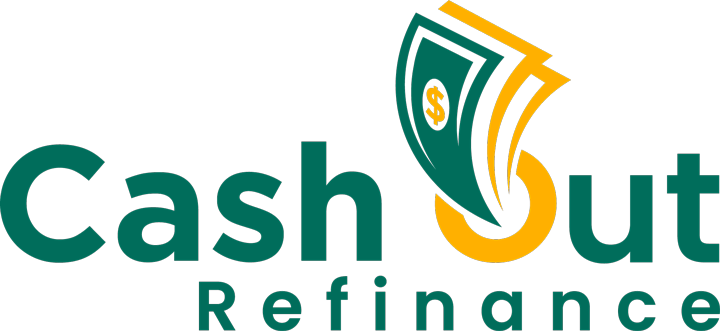The Ultimate Guide to Cash-Out Refinancing: Understanding the Refinance Process
Refinancing a mortgage can be a powerful financial tool for homeowners looking to lower their interest rates, reduce monthly payments, or tap into their home’s equity. Whether you’re considering a cash-out refinance or a traditional rate-and-term refinance, understanding the process in detail can help you make the right financial decision.
What is Cash-Out Refinancing?
Cash-out refinancing is the process of replacing your existing mortgage with a new loan, allowing you to borrow more than you currently owe and receive the difference in cash. This is commonly used for home improvements, debt consolidation, investment opportunities, or major expenses like education and medical bills.
Why Homeowners Choose Cash-Out Refinance
- Lowering the interest rate to reduce monthly mortgage payments.
- Accessing home equity for large expenses like renovations or debt consolidation.
- Switching from an adjustable-rate mortgage (ARM) to a fixed-rate mortgage for more predictable payments.
- Consolidating high-interest debt by rolling credit card balances or personal loans into the mortgage.
- Investing in real estate by using the cash-out funds for rental properties.
Types of Cash-Out Refinancing
There are different refinancing options available depending on your financial goals and qualifications:
1. Standard Cash-Out Refinance
- This is the most common type where you refinance for a higher loan amount than your current balance and receive the difference in cash.
- Lenders typically require at least 20% home equity to qualify.
2. FHA Cash-Out Refinance
- Available for homeowners with FHA loans, allowing refinancing up to 80% of the home’s value.
- Requires mortgage insurance premiums (MIP), increasing overall loan costs.
3. VA Cash-Out Refinance
- Designed for eligible veterans and active military members.
- Allows refinancing up to 100% of the home’s value with favorable loan terms.
4. Jumbo Cash-Out Refinance
- For homeowners with high-value properties exceeding conventional loan limits.
- Requires higher credit scores and larger cash reserves.
5. Home Equity Loan vs. Cash-Out Refinance
- Home equity loans function like a second mortgage, offering a lump sum at a fixed rate.
- Cash-out refinancing replaces your existing mortgage, often offering better interest rates.
Step-by-Step Guide to the Cash-Out Refinance Process
Step 1: Determine Your Refinance Goals
Before applying, assess your financial needs and objectives. Are you looking for lower payments, debt consolidation, or funds for home improvements?
Step 2: Check Your Credit Score
Lenders use your credit score to determine loan eligibility and interest rates. Generally, a credit score of 620+ is required for conventional loans, while FHA and VA loans may accept lower scores.
Step 3: Evaluate Home Equity and Loan-to-Value (LTV) Ratio
Lenders require a loan-to-value (LTV) ratio of 80% or less for conventional cash-out refinancing. The more equity you have, the better loan terms you may receive.
Step 4: Research and Compare Lenders
Different lenders offer varying interest rates, loan terms, and fees. Compare multiple offers to secure the best deal.
Step 5: Gather Required Documents
- Proof of income (pay stubs, tax returns, W-2s)
- Credit report and score
- Bank statements
- Home appraisal report
- Mortgage statements
Step 6: Apply for the Loan
Submit your refinance application with the lender of your choice. The underwriting process will begin to verify your financial details and home value.
Step 7: Home Appraisal
Most lenders require a home appraisal to assess property value, which determines how much equity can be accessed.
Step 8: Loan Approval and Closing
Once approved, you’ll receive a closing disclosure with final loan terms and costs. At closing, you’ll pay any associated fees and start your new mortgage.
Pros and Cons of Cash-Out Refinancing
Pros:
✅ Access to large sums of cash at lower interest rates than credit cards or personal loans. ✅ Potentially lower interest rates than your current mortgage. ✅ Funds can be used for home renovations, debt consolidation, or investments. ✅ Possible tax deductions on mortgage interest (consult a tax professional).
Cons:
❌ Extending your loan term may increase total interest paid over time. ❌ Closing costs range from 2% to 6% of the loan amount. ❌ Increased monthly payments if the new loan amount is significantly higher. ❌ Risk of foreclosure if payments become unmanageable.
When is the Right Time to Refinance?
Refinancing is beneficial when:
- Interest rates are lower than your current mortgage.
- You have significant equity in your home.
- You need cash for large expenses or investments.
- You plan to stay in your home long enough to recoup closing costs.
Alternatives to Cash-Out Refinancing
- Home Equity Line of Credit (HELOC): A revolving credit line that allows withdrawals as needed.
- Personal Loans: Unsecured loans with higher interest rates but no risk of foreclosure.
- Home Equity Loan: A fixed-rate second mortgage providing a lump sum amount.
Final Thoughts
Cash-out refinancing can be a smart financial move if used wisely. Whether you’re looking to lower your mortgage payments, access funds, or consolidate debt, understanding the process and weighing the pros and cons is crucial.
Are you considering a cash-out refinance? Contact a lender today to explore your options and take the next step toward financial flexibility.

